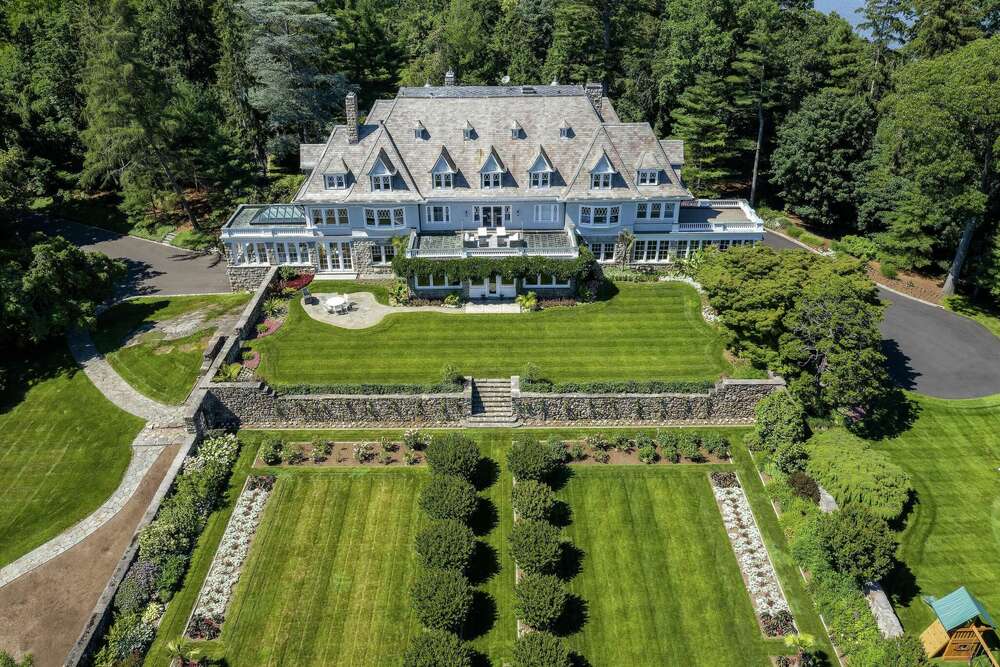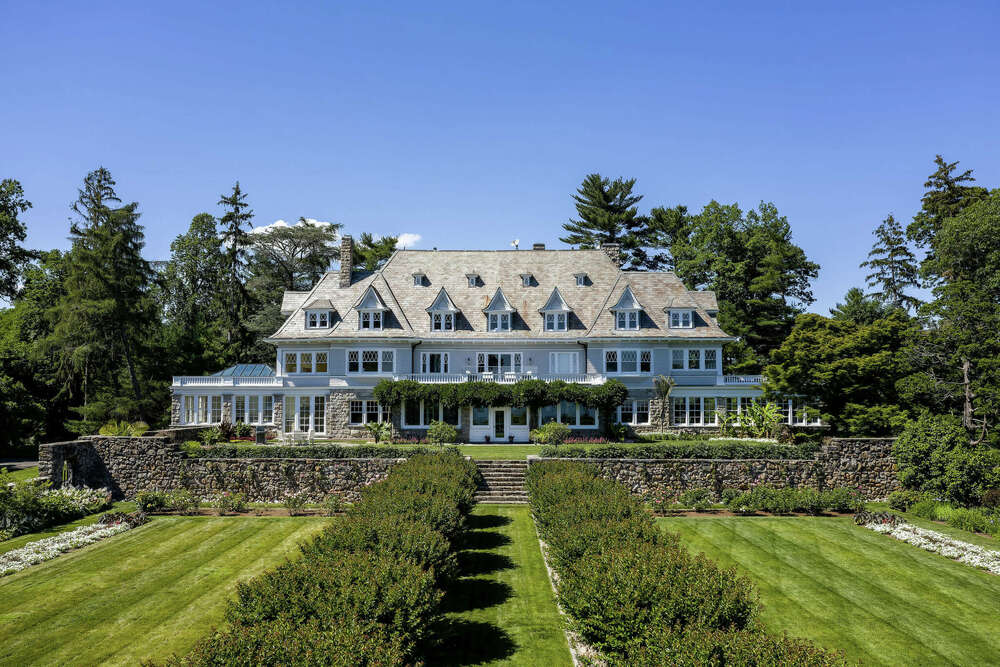A conversation with the Greenwich Historical Society’s Christopher Shields
Greenwich Time | Gretchen A. Peck | Feb. 16, 2023
Featured image: The main house at 499 Indian Field Rd., Greenwich — Copper Beech Farm — was meticulously restored. The grand residence dates back to the Victorian era and today has eight bedrooms, eight baths, and 13,519 square feet of interior space.
Greenwich is a town rich in American and architectural history. With so many newcomers having relocated to Greenwich in recent years, it felt timely to connect with Christopher Shields, curator of library and archives at the Greenwich Historical Society, to talk about the landmarks program and the preservation of historic sites across town.
For new homeowners or renters coming to town, who have an interest in Greenwich’s wonderful architectural history, Shields recommended the 2005 book “Building Greenwich: Architecture and Design, 1640 to the Present,” by Author Rachel Carley.
“It’s a history of the town, seen through the different architectural styles and different neighborhoods,” he said.

Shields also recommended learning more about the Greenwich Historical Society’s Landmarks program, which recognizes homes of a certain age—many with local historic significance, as well. In a typical year, a juried panel grants landmark status to up to five structures, which might be residences or commercial buildings. Some years, the panel looks for properties that share a common theme. For example, homes recognized for their age and attachment to prominent Greenwich women. This year, to coincide with an exhibit about local sports and sports personalities, they’ll recognize properties that have had sports icons as residents.
“Being recognized as a landmark by the program doesn’t put any restrictions on what a homeowner can do with the house,” Shields noted. “I think there’s sometimes a concern that people have, that if you have an older or historic home that our recognition might prevent them from making updates.”
Fortunately, many Greenwich homeowners who have acquired historic properties have invested in renovations that create a contemporary luxury-home experience, while still preserving the vintage character.
“The purpose of the program is to give people a better appreciation for the historical, cultural and architectural history of the town,” Shields said. “It also honors people who have an appreciation for the architecture and have invested a lot of resources to update a house sensitively, so that it doesn’t lose that historic character.”
The landmarks jury takes into consideration how the home has been updated over the years, and whether care has been given to preserve the quality and craftsmanship of the architecture. For example, an historic home that has been covered over with vinyl siding may not get the greenlight.

“We want to see historically accurate materials being used,” Shields explained. “Beyond the preliminary vetting of the home, the jury decides whether to move ahead. At that point, we have someone who does a visit to the home, who takes photographs and writes up an architectural description. He’ll go as far back as possible to research the deed and title. That research can be a fantastic resource, because it gives you a lot of information about the structures, additions or outbuildings that were added to the property over time. It also provides information about all the people who owned the property, and sometimes that’s where we can flush out some additional human-interest stories about the property, once we get those names.”
“We want to raise awareness and appreciation for these structures, because so many of them are lost every year,” Shields concluded.
“Some people buy a property and see the structure as something that doesn’t meet their immediate needs; worse, they see the home as disposable. Whenever possible, we try to counteract that and show that living in an historic home doesn’t mean that you have to live in the past,” he suggested.
That’s certainly the case for Copper Beech Farm at 499 Indian Field Road, one of Greenwich’s Great Estates, which dates back to 1898 and today — magnificently restored and renovated — is offered to the market for $150 million. Sotheby’s Realtors Leslie McElwreath and Joseph Barbieri are the seller’s agents. An 1,800-foot driveway leads to the eight-bedroom main house, punctuated by two French Renaissance-style stone towers. The house, a carriage house, a gatehouse, a pool house and two greenhouses are situated on more than 50 acres, with a mile of shoreline, a private island, two private beaches, a swimming pool, grass tennis court and an apple orchard.
The Greenwich Historical Society welcomes new members, but you don’t have to be a member to take advantage of its invaluable resources, including research assistance.
“We have documents from real estate firms that used to operate in Greenwich,” Shields said. “They’re very detailed, and they have a lot of wonderful historic photographs. There are sales brochures and other types of documentation about older homes. We have wonderful maps that show the changes to the community over time and also the names of property owners. On microfilm, we have the town land records that people can search. We also have the town’s assessor’s cards and old grand lists. We have a lot of resources.”


